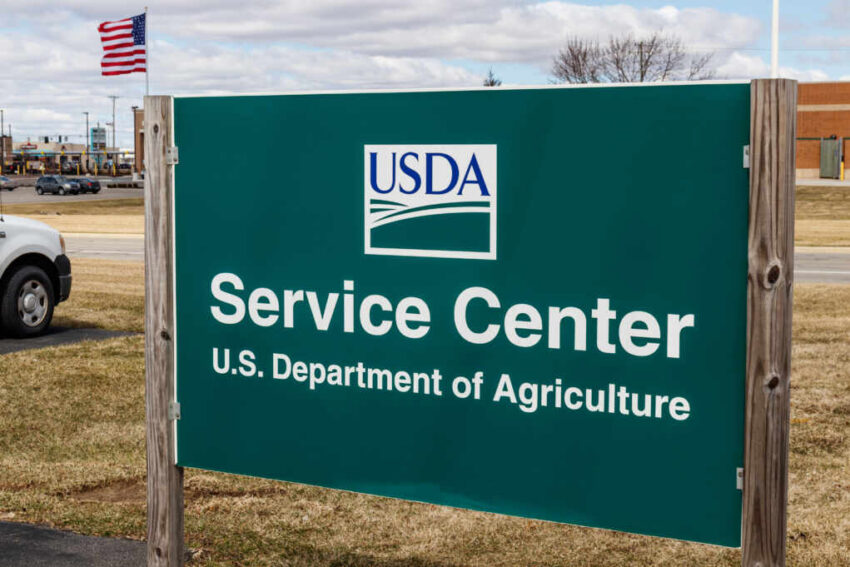The USDA’s decision to uproot its Washington, D.C.-based staff and relocate them to regional hubs has sparked a national debate about cost-saving measures versus the loss of institutional knowledge and employee upheaval.
At a Glance
- The USDA plans to vacate several buildings in Washington, D.C., and relocate staff to five regional hubs.
- This move is part of a broader initiative to cut costs and increase efficiency.
- Approximately 2,600 USDA employees will be affected by the relocation.
- The reorganization carries significant implications for federal employees and agricultural stakeholders.
USDA’s Bold Move: A New Era or a Risky Gamble?
The U.S. Department of Agriculture (USDA) has announced a sweeping reorganization, marking a significant shift in how the federal agency operates. By vacating several buildings in Washington, D.C., including its flagship research center, and relocating much of its staff to five regional hubs, the USDA aims to streamline its operations. This decision aligns with President Trump’s ongoing effort to decentralize federal agencies and bring government closer to the American people. However, this move raises questions about potential disruptions to the agency’s functions.
USDA to vacate several Washington buildings, relocate staff to regional hubs https://t.co/DBZ5InqRwW
— FOX Business (@FoxBusiness) July 25, 2025
Secretary Brooke Rollins, the mastermind behind this initiative, describes the reorganization as a common-sense approach to reduce bureaucracy and enhance service delivery to American farmers, ranchers, and producers. The USDA’s decision reflects a broader federal trend towards decentralization, a hallmark of the Trump administration’s policy to “make real change in Washington.” Yet, as with any major shake-up, there are concerns about the impact on employees and the continuity of the USDA’s critical work.
Stakeholders and Their Concerns
The USDA’s reorganization affects a wide range of stakeholders. Secretary Rollins and USDA leadership are championing the cost savings and operational efficiencies that the move promises. However, USDA employees facing mandatory relocations are understandably worried about job security and potential layoffs. The General Services Administration (GSA) will manage the vacated federal properties, while regional communities stand to benefit from increased federal presence and economic activity. Despite these potential benefits, the employees who refuse to relocate risk termination, highlighting the power dynamics at play.
For the 2,600 employees required to move, the decision presents a stark choice: uproot their lives or face the possibility of job loss. Meanwhile, the cities designated as new regional hubs—Raleigh, Kansas City, Indianapolis, Fort Collins, and Salt Lake City—anticipate economic growth from the influx of federal jobs. But, as seen in past relocations, such as the 2019 move of the Economic Research Service and National Institute of Food and Agriculture, workforce attrition and loss of expertise are real risks.
Implications for the Future
The USDA’s relocation will unfold over several years, with the process beginning immediately. This phased approach aims to minimize disruption, yet short-term challenges are inevitable. Employee morale, continuity of research, and administrative functions will face tests. In the long term, the USDA hopes to achieve cost savings and improved service delivery, though the potential loss of institutional knowledge cannot be ignored. The move also sets a precedent for other federal agencies considering decentralization, potentially reshaping the landscape of federal operations.
The economic impact of vacating the National Capital Region will be significant, with reduced federal payroll and real estate presence. Conversely, the regional hubs are expected to enjoy increased federal employment and economic benefits. Politically, the move may fulfill promises of decentralization and reduced government waste, but critics argue it risks weakening federal agencies and politicizing their functions. As the USDA embarks on this ambitious journey, the balance between cost efficiency and maintaining agency effectiveness hangs in the balance.
Expert Opinions: A Mixed Bag
Industry experts and analysts offer a range of perspectives on the USDA’s reorganization. Proponents argue that decentralization can enhance responsiveness to regional needs and reduce operational costs. However, they caution against risks to agency cohesion and mission continuity, as evidenced by the challenges faced during the 2019 relocation of ERS and NIFA. Employee unions and advocacy groups typically oppose such moves, citing the negative effects on staff morale and the loss of valuable expertise.
Scholars of public administration highlight the potential pitfalls of large-scale relocations, particularly for research-intensive organizations like the USDA. While the USDA’s rationale centers on cost savings and improved service to agricultural stakeholders, critics warn of the potential for reduced research output and delays during the transition. The success of this reorganization will ultimately depend on how well the USDA manages these challenges and navigates the complexities of relocating its workforce.
Click this link for the original source of this article.
Author: Editor
This content is courtesy of, and owned and copyrighted by, https://republicanpost.net and its author. This content is made available by use of the public RSS feed offered by the host site and is used for educational purposes only. If you are the author or represent the host site and would like this content removed now and in the future, please contact USSANews.com using the email address in the Contact page found in the website menu.








